
Metalheads: fighting the stereotypes
What exactly is a ‘true metalhead’? This paper provides a description of metalheads and the stereotypes, misconceptions and truths surrounding this subculture.
Metalheads as a micro-population
Music has proven to be able to connect people on a great scale. Enjoying the same type of music seems to create a feeling of social cohesion amongst listeners. People listening to different artists and bands with different sounds and lyrics has created several communities and micro-populations over the years. Infamous examples of this are the punk culture in the midst of the 70s and the grunge culture in the 90s.
This paper discusses another example of a musical genre with an interesting group of fans: metal. Looking at fanbases of famous bands like Metallica or Iron Maiden proves that metal has a huge following. These are two out of hundreds of examples. These two bands have in fact become so famous that they are even known outside the metal niche today, as they have become what you could call 'mainstream'. Apart from these hundreds of famous metal bands, there is also a huge underground metal scene, consisting of mostly unknown bands that have small groups of fans as well. These fanbases of both the famous bands, the underground bands and those somewhere in-between, together form the interesting micro-population of metalheads. Throughout this paper, we will see that this micro-population deals with a ton of stereotypes, which will be discussed and put into perspective using data and important concepts.
The metalhead
Now what exactly is a metalhead? The word already gives away what the definition might be, namely someone who listens to metal. The Internet might be a helpful platform in finding opinions about the definition of the word 'metalhead'. Looking at Urban Dictionary, it becomes clear that there is some controversy amongst people on what the definition could or should be (Metalhead, n.d.). This definition shows some small attacks against the stereotypes surrounding the micro-population:
"A metalhead is anyone who listens to, and loves metal music."
“A metalhead is anyone who listens to, and loves metal music. Sub-genres are not a factor. Clothing is not a factor. Whether you hate everything is not a factor. Whether you just like the older metal bands, or the newer ones doesn't matter either. To be a fucking metal head, all you have to fucking do is love metal music. That’s fucking it.”
In this definition we already see the writer trying to defend 'the metalhead' from the stereotypes: the clothing, 'hating everything' and the type of metal you listen to. Not all metalheads look the same, behave in the same way or like the same bands. The stereotypes that many critics automatically link to metalheads and metal itself are not always correct. Scrolling further through Urban Dictionary shows that people (including metalheads) do not agree on the definition of what a metalhead is exactly. To some, it seems that the stereotypes are something they need to adhere to in order to be a metalhead, but most agree that to be a true metalhead, all you have to do is enjoy metal music.
Metal, as a genre
Even though opinions vary on what a metalhead is, most people seem to agree on one thing: to be(come) a metalhead, all you have to do is enjoy listening to metal. We can apply the concept of ‘enoughness’: to be perceived as an authentic member of a certain group or identity category you need to have enough emblematic features of that specific group (Blommaert and Varis, 2013). To be a metalhead it seems to be enough to enjoy metal music, which raises another important question that also goes along with a relevant discussion: when can a type of music be classified as metal?
Musical genres can be very hard to define, especially metal with its many subgenres. Some metal critics only see metal as noise, but the music definitely has some sort of code to it that makes it belong to the category of 'metal' and separates it from other genres like rock or pop (Weinstein, 2000: 10).
The metal genre started in the late 1960s / early 1970s, slowly evolving from rock music (Weinstein, 2000: 14). The true ‘founders’ of metal are often stated to be Led Zeppelin and Black Sabbath (Cogan & Phillips, 2009: 4). There were, however, many different metal movements starting back in the late 60s. Metal can be distinguished from (hard)rock music by the heavier and more deeply distorted sounds, frequent use of screaming vocals (or grunting) and often darker or more aggressive lyrics. This isnot necessary though, as metal is often based on complex, classical elements that definitely do not sound like 'just a wall of noise'. Over the years, the genre grew out to be one of the biggest genres and has acquired a huge following, giving rise many different subgenres like death metal, trash metal and nu-metal.
Many metalheads see a strong distinction between what is ‘true metal’ or ‘false metal’, often saying that ‘false metal’ is actually pop music, dressed up as metal (Cogan & Phillips, 2009: 5). Hating on pop music is not just a small trend amongst metalheads. It is a popular opinion that both artists and fans share. Pop music and metal can be seen as opposites. Where pop music is simple, soft and commercialized, metal is often more complex, loud and not everyone enjoys listening to it. This can be linked to authenticity: ‘real’ metalheads do not want to listen to pop music like everyone else, because it is stands for everything that metal is not, namely music created for the mainstream. Therefore, this does not fit in with the metalhead culture, and someone who listens to pop is therefore regarded as a 'fake' or 'inauthentic' metalhead.
Corey Taylor, the lead singer of the famous metal band Slipknot, stated in an interview with Loudwire that "pop music makes him ashamed to be a singer and songwriter, because the artists and music are so auto-tuned, beat-produced and lifeless while he puts his entire soul into his music" (Loudwire, 2015). This is an interesting example of a famous band member criticising pop music, especially since the band Slipknot is also criticised by some metalheads for not being ‘true metal’ and for being 'too mainstream'.
This strengthens the ‘true versus false metal’ discussion, but it also shows the strong boundary between insiders and outsiders of the micro-population. You are an 'outsider' if you do not follow or break the rules of the group you are (supposed to be) a member of (Becker, 1963: 1-2). If you like pop music or 'false metal', you can be seen as an outsider in the metalhead micro-population, because you do not follow the norms that some metalheads see as a necessary part of the micro-population: hating pop music and listening to 'true metal'. To some, it is not enough to just enjoy metal no matter what subgenre it belongs to or what pop elements it has; it has to be ‘true’ metal and you need to be a 'true' metalhead.
Opposites within metal: metalcore versus black metal
Examining two bands from completely opposite metal subgenres will help to make this discussion clearer. One of these genres is metalcore, which is a mixture of metal and hardcore punk, often containing more pop elements. An example of a well-known metalcore band is Bring Me The Horizon. Both this band and the genre itself often get a lot of hate and criticism for ‘not being brutal enough’, sounding too commercialised and it is generally a popular genre to make fun of on many different online platforms for these and many other reasons. An example is the YouTube video called "THINGS METALHEADS SHOULD NEVER SAY" by Jared Dines, giving examples such as "Bring Me The Horizon is the most brutal band ever" and "metalcore is the best metal genre and you're not a real metalhead unless you listen to it".
The closer the metal subgenre is to pop music, the more people will start to define it as ‘false metal’, because of the strong hatred towards pop music within the subculture. This is why fans of metalcore (and Bring Me The Horizon) sometimes get seen as outsiders.
An opposite of this genre is black metal, which is a genre with quite a history. It is often defined as one of the most ‘brutal’ and ‘evil’ subgenres of metal, and the source of stereotypes like church burnings and 'Satanic' rituals (Patterson, 2013: 1). The genre is probably as far away from pop music as possible, and therefore it rarely, if at all, gets called out for being ‘fake metal’. Of course, black metal still has its own critics and also gets made fun of as well, but mainly for reasons like the artists portraying the metal stereotypes. One of the most famous examples of black metal bands is Mayhem, one of the founders of the subgenre (Patterson, 2013: 127). They, like the genre, have an intriguing band history that goes from self-harming on stage to burning local churches. Even though they have an intense past and behaved in ways that society nowadays would definitely not see as appropriate behaviour, they were not seen as outsiders. In fact, they were often praised for their brutalities, which fit the subgenre perfectly.
Identity emblems, stereotypes and misconceptions
To construct a certain type of identity, you need to have enough 'emblematic features' of a certain group in order to be able to be part of that group. When most people think of a metalhead, they picture someone with long black hair, covered in tattoos and piercings, someone who wears only black clothes, band t-shirts, leather and occasionally denim (Weinstein, 2000: 25).
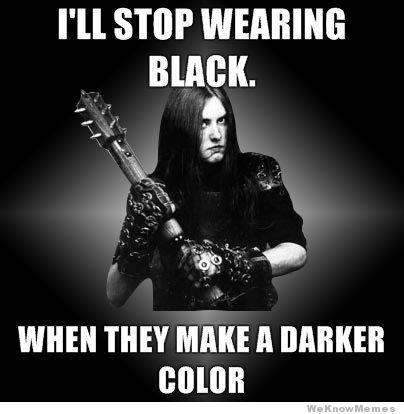
When you go to a metal concert, festival or other offline metal infrastructures, you will most likely see the majority of the people there looking exactly like that. Especially band T-shirts are frequently seen in the metal scene; they are a way to show what bands you listen to or (if you bought the merchandise at a concert) to show what concert you went to and in this way also construct a certain identity for yourself, as the music you listen to can say a lot about your personality.
Even though this fashion style and way of behaving are often seen as obligatory identity emblems for metalheads, they are definitely not the norm. You are not an outsider in this group if you do not dress like a metalhead, that's just a stereotype that many non-metalheads, critics and some extremist metalheads share. To many, this clothing style is a way of signifying their metalhead identity, but it is not a necessary identity emblem. As said before, all you need to reach that sense of enoughness is to enjoy metal music. Social heterogenity is much appreciated by most metalheads and everyone is free to be their own individual and authentic self. It doesn't matter in what way they construct their identity.
By showing that not all stereotypes are true (for everyone) it shows that there is no particular identity display that belongs to all members of this group. This is interesting, because it proves that people aren't expected to look a certain way or display a particular type of behaviour to identify as a metalhead. An example of this is Australian actress Margot Robbie, who claimed in an interview with Jimmy Fallon on The Tonight Show Starring Jimmy Fallon that “she used to be a huge metal fan” (The Tonight Show Starring Jimmy Fallon, 2016). On the show, she said the following about a Slipknot concert she went to when she was younger:
“I went to a Slipknot concert, [which was] actually to this day the best concert I’ve ever gone to. […] I was on a soap at the time in Australia called ‘Neighbours’, and the people that would genuinely watch Neighbours you’d imagine to be like families over dinnertime and like young people, but at the Slipknot concert I got more recognized than anywhere else I’d ever been while I was on Neighbours, it was so weird! And I was like ‘well this is one place, like, no one’s ever going to come up to me here’”.
This is an example of a discourse where metalheads do not act in their expected or stereotypical behaviour. You would not expect to have some badass guy covered in tattoos, who enjoys listening to metal, come up to you to ask about a show that is intended for youngsters or families.
Metalcore versus black metal: identity display
We can now go back to the comparison between the two subgenres we mentioned above. Comparing black metal to metalcore is interesting, as it shows both the variety of subgenres in the genre of metal and the variety of metalheads out there, again proving that not all stereotypes are true.
Metalcore band Bring Me The Horizon and its fans don't really look like the typical stereotype metal fans as described before. The band do not have the stereotypical all-black leather outfits or the long hair, and neither do most of their fans. Two point of view come up here: few see this as more reasons for this band to be called ‘fake metal’, instead, most see this as the band having their own style and approach to metal.

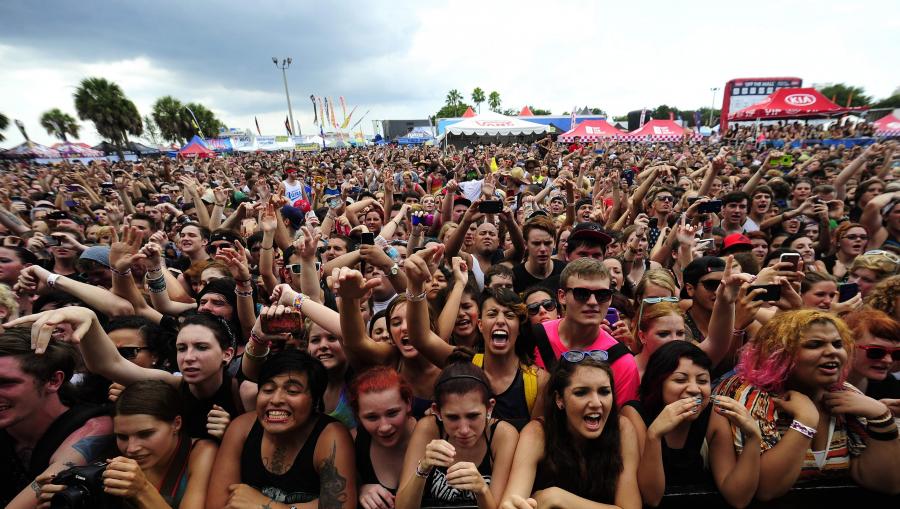
At the other end of the metal spectrum is black metal, with the band Mayhem as a main example. When talking about stereotypes, most of the metal stereotypes can be found within the black metal subgenre. Whether black metal bands like Mayhem are ‘true metal’ rarely ever gets questioned as they are so ‘brutal’ and because they can be seen as the epitome of the stereotypes. As seen in these pictures, both Mayhem fans and the band itself portray these stereotypical identity emblems: black clothes, black and white make-up (also called corpse-paint by metalheads), long hair and more. This gives metalheads fewer reasons to see this band as 'outsiders'.
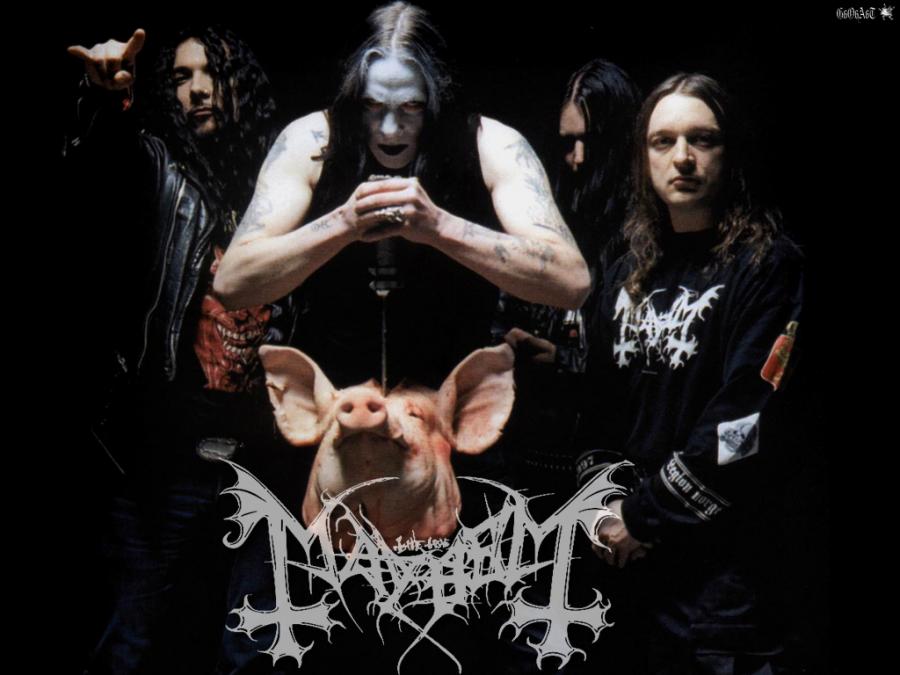
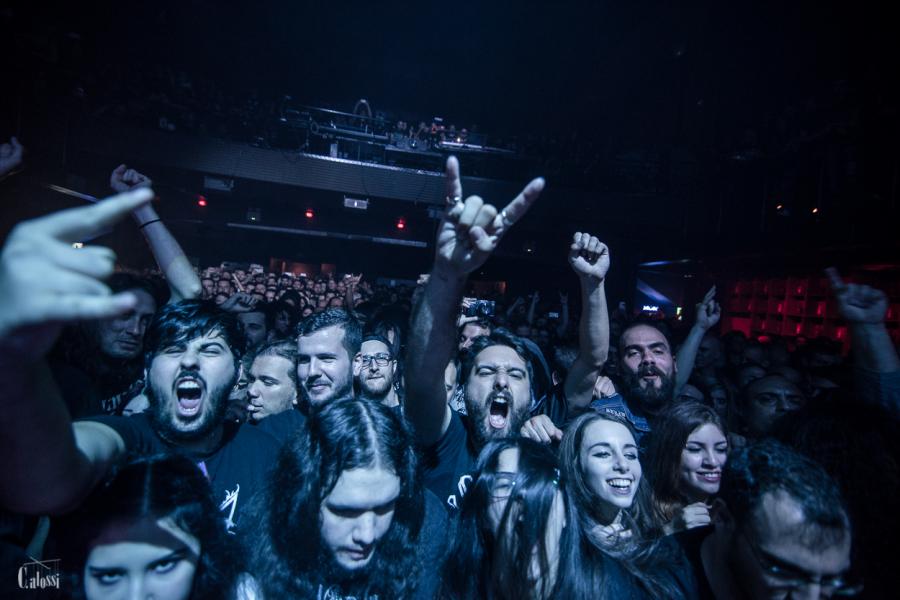
Mayhem fans, and black metal fans in general, often see black metal (and Mayhem specifically) as the only good and ‘true’ music genre. The band themselves however are not only into metal, but state that they have many different musical influences and that only being into black metal is 'a fan thing' (Patterson, 2013: 129). They even stated that they weren't even Satanists themselves, despite using Satanism and dark stories in their music (2013: 129). This makes the band seem a lot less 'brutal' than many fans think they are. Bands and fans can sometimes have conflicting views on what ‘true metal’ is, bands apparently having a more open-minded view of metal, whereas fans tend to get defensive over their favourite genre.
These two subgenres and bands both display a totally different style and identity, even though they can both be seen as metal. Showing two different ‘types of metalheads’ shows that there is a big variety within one genre. However, it is still true that those who do not have all the typical identity emblems (or genres that have more pop elements) are more easily 'mistaken' for outsiders or even non-metalheads. This also has to do with expectations: when we see a person walking down the street in a pink dress, we are less likely to think of them as a metalhead than when we see a person covered in tattoos and piercings, with long black hair, wearing all-black clothes.
Metal: online and offline
Metal is a huge genre, and its fans are spread all around the world. This makes it a polycentric micro-population, because it has multiple centers spread around the globe (Blommaert, 2005: 254). We can use the black metal scene as an example here. Black metal started in Norway, but throughout the years has spread to other countries, to the point where there are now bands from all around the world, such as Venom from the U.K., or Behemoth from Poland. This also explains why the metalhead micro-population is a multi-layered social group: the metalhead culture is not only produced on a local level, but on different levels of locality. A band can start out in a city, become big in their country and eventually get known worldwide. This also creates metalheads on these different levels of locality, because bands can only grow in popularity if they get more fans.
Nowadays, we live in a digital age in which online (digital) infrastructures play a big part in the shaping of a fanbase. This has also helped to create an even bigger polycentric and layered micro-population. On Instagram, Facebook and Twitter you can find a huge amount of 'metal memes', where metalheads mostly make fun of their own stereotypes. One of these memes can be seen above ("I'll stop wearing black when they make a darker color"). Many bands also have fans who make their own fan accounts, like the one in this picture.
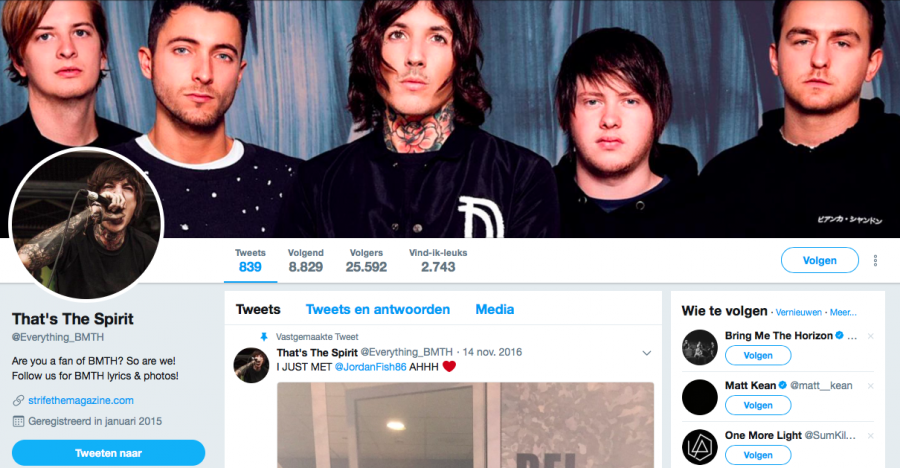
These fan accounts are place for metalheads to express their opinions on the band they support and maybe meet other fans via this way. There are metal blogs, where metalhead journalists preach what they think are good and bad albums in both the famous and underground metal scene, an example of this being Angry Metal Guy (Angry Metal Guy, n.d.). Most metal bands have websites filled with their music, pictures, tour dates and merchandise. They have their own Instagram, Facebook and other social media accounts, which they use for promotion and updates. The online sales of music play a big role of course, as an online infrastructure for metalheads. The bands' music videos and live videos are shown on YouTube, Spotify and other music platforms, where they can be viewed by the masses. Here, and on other social media, fans and critics express their love or hate for the band.
An interesting subgroup that cannot go unmentioned is the YouTube metalhead group. There are many metalhead musicians on YouTube, who try to make their living creating funny videos about metal, or by putting their music up on YouTube. Jared Dines is one of these YouTubers (Jared Dines, n.d.). He uses the platform to both make videos on metal (and sometimes other genres) and to share his music with a large audience. He also makes fun of the stereotypes surrounding metal and its musicians in his videos, following the popular trends mentioned earlier (like in the "THINGS METALHEADS SHOULD NEVER SAY" video mentioned above).
Concerts and festivals are the place where no one has to think about the stereotypes and controversies and just have an amazing time listening to great music together.
Even though there are many different online infrastructures that metalheads use nowadays, we cannot say that there has been a huge shift from offline infrastructures (such as concert halls, festivals and other metal meetings) to online infrastructures. Metal concerts and festivals are an important part of the micro-population of metalheads. They are the places where you see your favourite artists and bands. A YouTube video of a concert cannot compare to the feeling of going that actual concert. Concerts and festivals are the place where no one has to think about the stereotypes and controversies and just have an amazing time listening to great music together.
To be a fucking metalhead
Metalheads and their stereotypes are probably slightly more complex than you expected before reading this paper. Comparing just two bands, out of the thousands of bands within this genre, has showed the huge diversity within both the music genre and its fans. Since metal has so many subgenres, it is even more diverse than portrayed here. It is a polycentric and multi-layered micro-population, and its members are spread all around the world. The stereotypes and misconceptions that many people mistake for truth have proven to be wrong in most cases.
Of course, there are certain identity emblems and specific discourses that are strongly connected to metalheads, like the black clothing and the band t-shirts. And of course, there are those 'extremist metalheads' that see it as a 'must' to have the exact described identity display. Freedom and open-mindedness are therefore very important, and this means the only real requirement to be a member of the group is: “to be a fucking metalhead, all you have to fucking do is love metal music. That’s fucking it.”
References
Angry Metal Guy. (n.d.). Home. [Blog]. Accessed April 26, 2017, see Angry Metal Guy
Becker, H.S. (1963). Outsiders. New York: The Free Press.
Blommaert, J. (2005). Discourse: A Critical Introduction. Cambridge: Cambridge University Press.
Blommaert, J. and Varis, P. (2013). Enough is enough: The heuristics of authenticity in superdiversity. In: Duarte J and Gogolin I (eds) Linguistic Superdiversity in Urban Areas: Research Approaches. Amsterdam: John Benjamins, pp 143-158.
Cogan, B., & Phillips, W. (2009). Encyclopedia of Heavy Metal Music. Accessed April 20, 2017. See Google Books
Jared Dines. (n.d.). Home. [YouTube Channel]. Accessed April 26, 2017, see YouTube
Loudwire. (2015, August 25). Slipknot's Corey Taylor: Pop Music is Insulting. [YouTube]. Accessed April 20, 2017, see YouTube
Metalhead. (n.d.). In Urban Dictionary. Accessed April 25, 2017. See Urban Dictionary
Patterson, D. (2013). Black Metal: Evolution of the Cult. Port Townsend: Feral House.
The Tonight Show Starring Jimmy Fallon. (2016, September 30). Margot Robbie Was a Huge Metal Fan. [YouTube]. Accessed 7 May, 2017, see YouTube
Weinstein, D. (2000). Heavy Metal: The Music And Its Culture. Accessed April 20, 2017. See Google Books